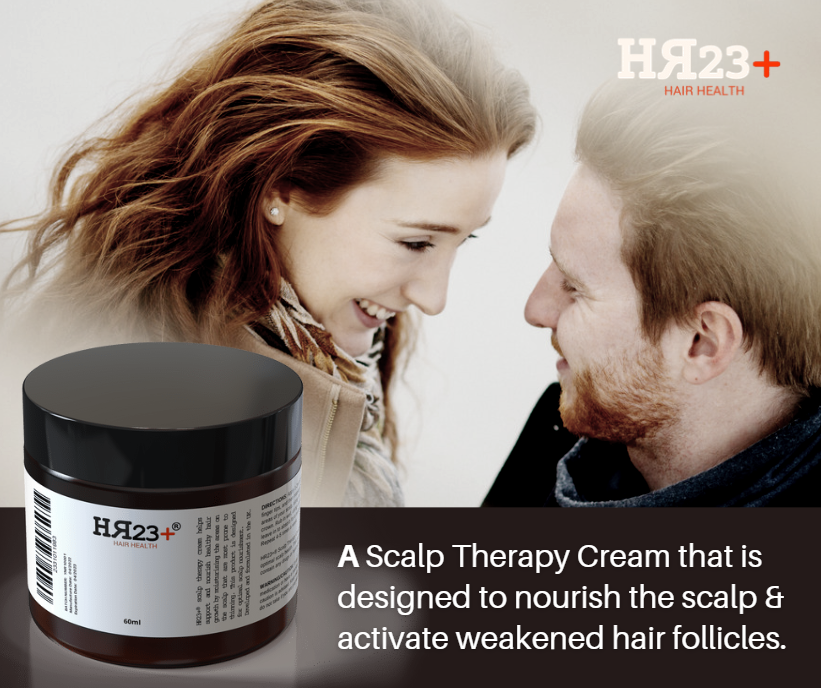
Dealing with Female Hair Loss into Your 40s and Beyond
By Tania Lane.
Hair loss affects over 50% of women by the age of 40, and that figure increases to 65% by the age of 50. For most women, losing hair most commonly occurs in their 40s, which can be concerning.
In this article, we look at some of the main reasons why so many women tend to suffer from thinning hair in their 40s, what the causes are, and what treatments are available.
Why do women experience hair loss in their 40s?
As we approach our 40s, our bodies start to go through some changes, and many of those drastic changes effect our hair. For the majority of women like me, the strands start to feel and look dry and brittle. The hair also gets progressively thinner and less manageable. We experience more aggressive shedding, and less growth, which can be a real concern.
As a woman, hair loss is one of the worst things you can go through. Our hair is what makes us feminine, it gives us an identity, and without it, it can destroy our confidence, and leave us feeling depressed.
There are literally millions of women around the world who are experiencing some form of hair loss, and the vast majority of them are experiencing it in their 40s, and beyond. So, fear not, because you are not alone. Many women in their 40s are experiencing similar changes, and in a big way.
Changes come in waves, some slow and subtle and others make you feel like you’re a different person overnight. So, when the hair starts to change, it’s natural for you to feel scared.
What causes women to lose hair in their 40s?
Firstly, before you even look into treatments, the most important thing to do is to identify what is causing your hair to thin and fall out. Estrogen levels steadily decline as women reach their 40s and head towards menopause, so, as a result, testosterone levels start to take control.
Although high testosterone levels is something that is usually associated with men, isn’t all bad for women, because it actually can help us live longer, but it does come with a price, and that often means thinning and loss of hair, which is not what we want.
The hair growth rate naturally slows down with age, so that’s perfectly normal, and expected. However, more significant hair loss is attributed to changes in hormone levels, especially as women approach their 40s, and then reach menopause.
An under active thyroid is often another major cause. In essence, it’s not so much that you’re losing hair, you’re just not growing more hair than you’re shedding, and this can quickly lead to a thinning and patchy scalp.
Other causes of hair loss in women include post pregnancy, menopause, stress, and seasonal hair loss. All these types of hair loss tend to be temporary, but they can become long term problems if they occur in conjunction with mature shedding.
Treatments are available for these types of hair loss, but results tend to vary from person to person.
How to treat female hair loss?
Hair loss is often caused by harsh styling products that can stress, break and damage the strands. so, the first thing you should look at is what styling products you are using on your hair. Over-styling can lead to unnecessary hair loss, which isn’t ideal if you are already suffering from natural shedding.
While your instinct is to style your way out of lacklustre hair, you are in fact adding to the problem. The worst styling products you can use are chemical based formulas, and heat-based devices such as hairdryers and straighteners. If these can be avoided (or at least minimised), then do so.
Taking the right vitamins can help you get the very best out of your hair. Vitamins A, C, and E all help promote cell and tissue growth. B Vitamins like Biotin and Folic Acid are also excellent hair growth promoters, and add to that a healthy diet of foods rich in calcium, antioxidants and Omega-3 fatty acids, and you have a recipe for success.
Multivitamin hair supplements such as HR23+® and Viviscal offer an excellent solution for women (and men) who suffer from early stages of hair loss.
Multivitamin hair supplements contain a blend of hair loss prevention additives and hair growth promoters, which in turn, can help stump excess shedding, and support healthy, thicker hair growth. What’s more, these types of products are safe, and free from negative side-effects.
Multivitamins are also hugely effective for women who are deficient n certain nutrients that are vital for hair loss prevention and hair growth.
Eating can also pay a key role in the health of your hair. High protein foods such as eggs, meat, fish, and lentils will not only benefit your hair, but also your whole body. And don’t forget the obvious counter punch to dry, brittle hair – stay hydrated with plenty of water!
Then, finally, there’s the medical route, which, for many people, is a risk. Medical treatments like minoxidil (Regaine/Rogaine) can help promote hair growth, however, they also come with potential risks of negative side-effects. Like with any drug, precaution is advised.
Also, be aware of the shedding phases that minoxidil can give. Minoxidil is fine for treating female pattern baldness, but it can be detrimental to other hair loss types, so be sure to know your exact hair loss type before committing to treatments that come with risks.
To conclude…
We each face different issues with our hair as we get into our 40s, but there are perfectly valid steps you can take in order to minimise its impact on your life and on your appearance. For some, the challenge is greater than others, but no matter what the end result is, the most important thing to remember is – don’t stress about it too much.
Look at your diet, and also asses what you are putting into your hair. Look for natural, healthy solutions that can help reduce unnecessary shedding. The problem most women have is that, yes, they’re going through a phase of excess shedding, but certain things are accentuating this. The priority should be to first slow down the shedding, and then try and maintain the healthy growth of hair.




Leave a Reply